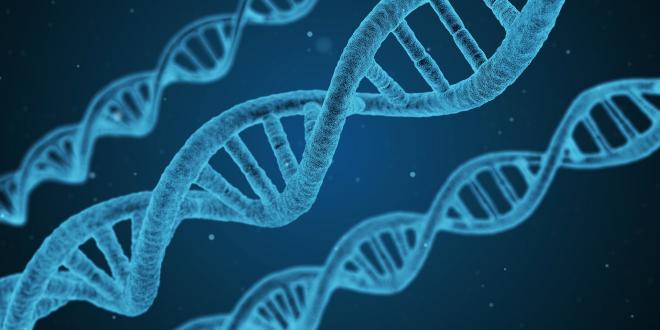Building genomics connections across the Tasman
As Genomics Aotearoa investigates tools for its new collaborative platform for genomics and bioinformatics, NeSI is lending its expertise in training and computational resources to help test-drive some of the candidates.
Announced in August 2017, Genomics Aotearoa is an alliance led by the University of Otago and includes the Universities of Auckland and Massey, Crown Research Institutes AgResearch, ESR, Landcare Research, Plant and Food Research, and 32 associate organisations including researchers and end users of genomics and bioinformatics. As a national initiative, it aims to put in place key genomics and bioinformatics infrastructure to underpin research exemplars across three themes: Health, Environment, and Primary Production.
One of the tools being considered as part of the computational platform is the Australian-made Genomics Virtual Laboratory (GVL), a cloud-based suite of genomics analysis tools for research and training. Billed as a tool that “takes the IT out of bioinformatics”, the GVL is funded by the National eResearch Collaboration Tools and Resources project (Nectar) and led by Melbourne Bioinformatics at University of Melbourne in collaboration with the Research Computing Centre at the University of Queensland.
In November 2017, Genomics Aotearoa arranged a series of workshops in collaboration with the University of Otago, the Centre for eResearch at the University of Auckland, and Nectar to test-drive the GVL with New Zealand researchers. NeSI’s Research Community Manager, Aleksandra Pawlik, assisted by providing training support for the sessions.
“From my past experience in teaching computational skills to researchers, I know that it is essential to teach people tools they can carry on using beyond the workshop setting,” says Pawlik. “The GVL removes all the headache of setting things up, which makes it attractive and easy for researchers to try. I think there is great potential for using this in New Zealand and hope to see it become an accessible and prevalent tool in the research community.”
Launched in 2013, Nectar funded the GVL to make genomic data analysis more accessible to life scientists. It offers a “computational workbench” preconfigured with best practice genomics tools, widely used within the research community, and is supplemented with tutorial materials and user support. There are large installations at Monash, Melbourne and Queensland universities, with more planned for Western Australia, New South Wales and Tasmania.
University of Otago Associate Professor Mik Black and University of Auckland Professor Cris Print are part of Genomics Aotearoa’s bioinformatics team and are assisting with the assessment of potential tools. Following conversations with Nectar, an idea emerged to trial the GVL. Elizabeth Permina, a Bioinformatics Specialist at the Otago Genomics and Bioinformatics Facility, carried the idea forward and spearheaded much of the development and delivery of the November workshops.
“The training workshops provided an excellent introduction to the GVL environment and there is definitely potential for considering it as part of our compute offerings for Genomics Aotearoa,” says Black. “Not only would it be an excellent addition to our infrastructure, it is also an excellent opportunity to foster a trans-Tasman collaboration that will strengthen genomics and bioinformatics research in both countries.”
From NeSI's perspective, this aligns with its direction to explore and support virtual laboratories and pilot projects that will elevate the NZ research sector.
“NeSI is always interested in training and tools that enable researchers to work in more effective and innovative ways,” says Georgina Rae, Engagement Manager at NeSI. “The GVL has given us a glimpse of what the future could look like for supporting New Zealand’s research communities and we welcome the possibilities of collaborations and partnerships with international leaders such as Nectar.”
The GVL trial was made possible by:
- Dr Elizabeth Permina, Bioinformatician, Otago Genomics and Bioinformatics Facility, Health Sciences, University of Otago
- Dr Aleksandra Pawlik, Research Community Manager, New Zealand eScience Infrastructure
- Mr Sean Matheny, Research IT Specialist, University of Auckland
- Prof Cristin Print, Department of Molecular Medicine & Pathology, University of Auckland
- Assoc Prof Mik Black, Department of Biochemistry, University of Otago
- Mr Nick Jones, Director, New Zealand eScience Infrastructure
- Prof Mark Gahegan, Department of Computer Science, University of Auckland
- Prof Peter Dearden, Director, Genomics Aotearoa
- Dr Michelle Barker, Deputy Director, Research Software Infrastructure, Nectar
- Prof Glenn Moloney, Director, Nectar
- Dr Paul Coddington, Deputy Director, Research Platforms, Nectar
- Assoc Prof Andrew Lonie, Director, Melbourne Bioinformatics & EMBL-ABR
- Mr Simon Gladman, GVL Lead, Melbourne Bioinformatics
The GVL workshops were delivered with help / input by:
University of Otago
- Elizabeth Permina
- Aleksandra Pawlik
- Erica Todd
- Michael Meier
- Tom Harrop
- Hugh Cross
- Greg Gimenez
University of Auckland
- Elizabeth Permina
- Aleksandra Pawlik
- Erica Todd
- Will Schierding
- Nooriyah Poonawala
- Liam Williams
- Peter Tsai







